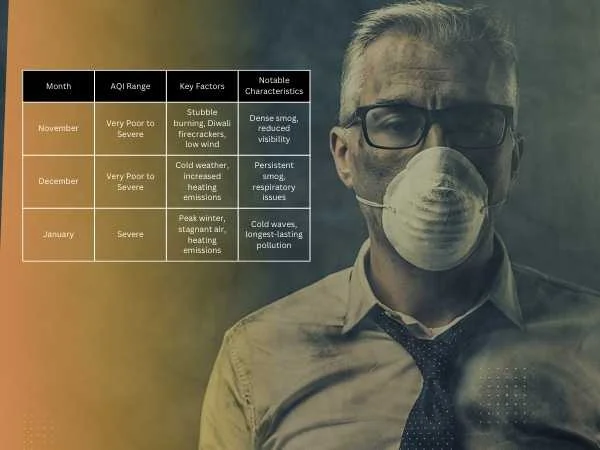It is important to understand both viral and bacterial infections, as the initial appearance of these two infections seems to be alike, yet they are actually very different inside the human body. Many people get confused when they fall sick because at times, symptoms such as fever, headache, sore throat, and tiredness appear in both kinds of infections. This makes it difficult to tell what type of germ is causing the sickness. But once we learn how viruses and bacteria behave, it gets considerably easier to understand what is happening inside us.

Viruses and bacteria infect the body through different routes of entry and proliferate variably, causing symptoms for different reasons altogether. They also act differently with regard to treatment. For instance, antibiotics are helpful in bacterial infections but do nothing in viral infections. Wrong treatment may delay recovery and even cause other damage to the body. That is why knowing the difference helps people make informed choices on health matters and seek appropriate medical intervention. This extended guide explains everything in simple language: how the viruses and bacteria work, how they spread, how the body fights them, how doctors diagnose them, and why treatments differ so much.
What are Viruses and Bacteria? Basic Understanding!
The main difference between viral and bacterial infections comes from the nature of the germs themselves.
Viruses
Viruses are extremely small — so tiny that regular microscopes cannot detect them. They are not complete living organisms. They are more like small packets of genetic material covered by a protective coat. They can’t grow, feed, or reproduce by themselves. They must enter a living cell to survive.
When it enters the body, for example, a virus is looking for the right type of cell. The virus causing flu infection attacks the cells of the nose and throat. After finding a suitable cell, it attaches to the cell, enters inside, and starts using the cell as a factory to make more viruses. The infected cell eventually bursts or stops working correctly. This damage causes symptoms like fever or sore throat.
Bacteria
Bacteria are much bigger and more complex than viruses. They are living organisms capable of surviving in many environments. Some bacteria are helpful to the body-for example, some of those in our stomach help with digestion. However, damaging bacteria can enter the body and multiply at a rapid rate.
Because bacteria do not need to enter cells to grow, they can multiply freely in the skin, throat, blood, lungs, stomach, or any place they infect. Some bacteria release toxins that damage tissues, while others cause swelling and pus formation. Examples include strep throat, pneumonia, and urinary tract infections.
Overall, while viruses cannot survive without a host cell, bacteria are able to survive and grow nearly anywhere.
How Viruses and Bacteria Cause Disease Inside the Body?
The difference between the symptoms in many cases is due to the fact that viruses and bacteria harm the body differently.
How Viruses Work!
Viruses enter the body through air we breathe, food we eat, or by touching infected areas or people. Here, too, they attach themselves to specific cells and inject their genetic material inside. After gaining entrance, they force the cell to work for them.
The infected cell gets weakened and ultimately dies. The body responds through sending immune cells to fight against the virus. It is this particular immune response, along with the cell damage caused by viruses, that gives rise to symptoms like:
- High fever
- Cough
- Runny nose
- Fatigue
- Muscle ache
- Sore throat
Most viral infections are transient, in that the immune system usually manages to eliminate the infected cell and clear the virus.
How Bacteria Work!
Generally, bacteria enter the body via wounds, contaminated food or water, dirty hands, or close contact with infected individuals. When they gain entry, they multiply rapidly. Some of them liberate toxins that destroy tissue. Others cause swelling and pus when the body sends cells to fight them.
Symptoms of bacterial infections include:
- Local redness
- Swelling
- Pain
- Pus
- High fever
Example symptoms of bacterial throat infection include swollen tonsils with white patches; a skin infection can be manifested through boils or pus-filled bumps. Unlike viruses, most bacteria do not circulate in the body, but the few that do may cause serious diseases.
The Reaction of the Immune System
The immune system, which protects the body against infections, reacts differently to viruses and bacteria.
Immune Response to Viruses: If a virus invades the body, the immune system immediately begins to produce unique proteins known as interferons. The proteins decelerate the virus and weaken its capability to spread. The body also turns on T-cells and natural killer cells that assault and destroy infected cells. This struggle of the immune system with the virus brings on general symptoms throughout the body, such as fever, weakness, and body pain. Actually, these symptoms signal that the immune system is working hard, not that the virus is causing trouble.
Immune Response to Bacteria: Whenever the bacteria enter the body, the immune response launches neutrophils, a form of white blood cell, known to kill the bacteria. These cells accumulate at the site of infection, leading to redness, swelling, heat, and pus. These signs indicate that the defense mechanisms are in action against the bacteria. This is why bacterial infections often feel more “localized” – like a painful throat, a single swollen area, or one specific organ getting infected.
How Viral and Bacterial Infections Spread?
Both kinds of infections spread differently according to the environment and type of germ.
How viruses spread
Viruses often make their way into our bodies when they become very contagious, building up inside the nose and throat. Simple actions like talking, sneezing, coughing, or touching surfaces can spread viruses to others.
They can spread by:
- Air droplets
- Touching contaminated surfaces
- Sharing food or beverages
- Close contact
- Poor hygiene
The common cold and flu viruses, for example, can spread quickly among large populations because a very small amount of virus is enough to induce an infection.
How Bacteria Spread
Bacteria spread in different ways: some require direct contact, others through contaminated food and water. Some of the bacteria enter through cuts or wounds, while others are carried by insects.
Common bacterial spread methods:
- Polluted water
- Badly prepared food
- Dirty hands
- Cuts and injuries
- Bodily fluids
- Animal or insect bites
Bacteria require more specific conditions to spread than viruses.
Why Is Diagnosis Difficult?
Viral and bacterial symptoms are usually similar in the initial days, which therefore makes it hard to be sure of the causative agent without medical tests.
For instance,
- Fever is common in both.
- Sore throats may either be viral or bacterial.
- Cough may occur in both.
Even mucus and pus can sometimes appear in viral infections, making it even more confusing.
How do Doctors Tell the Difference?
Doctors use several tests to find the cause.
- Blood tests to check white blood cells
- Tests from throat or nose swabs
- PCR tests for detecting viruses
- Cultures that grow bacteria to identify them
- Urine tests for bacterial infection
- X-rays for lung infections
Accurate diagnosis ensures proper treatment with a view to avoiding the misuse of medicines.
Treatment Differences: Why It Matters!
The most significant and vital difference between bacterial and viral infections lies in how they are treated.
Treatment of Viral Infections
Most of the viral infections have no direct cure. The body is supposed to fight them naturally. Usually, rest, fluids, and some basic medicines for fever or pain are sufficient. So far, doctors prescribe antiviral medicines for only certain critical viral infections such as HIV, COVID-19, or severe influenza. Antibiotics do not work on viruses because viruses do not have structures that antibiotics target.
Bacterial Infection Treatment
The usual treatment for bacterial infections includes the use of antibiotics. These medications either kill the bacteria or prevent them from multiplying. If left untreated, bacterial infections may get worse or spread.
Examples of cases that require antibiotics:
- Strep throat
- Urinary tract infections
- Bacterial pneumonia
- Skin infections
Using antibiotics when they are not needed can lead to antibiotic resistance, making future infections harder to treat.
When Both Happen Together: Co-Infection
Sometimes, viral and bacterial infections happen together. This is termed a co-infection.
For example:
- A person catches the flu.
- The flu virus compromises the lungs.
- Bacteria invade the already weakened lungs.
- The individual develops bacterial pneumonia.
This is a more serious combination since it means the body is fighting two types of infection simultaneously. Doctors have to treat both the virus and the bacteria to help the patient get well again.
What Happens at the Molecular Level?
At the microscopic level, viruses and bacteria have different interactions with our cells.
Viruses: They attach to cells and penetrate them, using special proteins for this purpose. After penetration, they take over and start making more of their kind. They alter the cellular activity in a way that eventually causes cell death.
Bacteria: These bacteria have small structures that attach to the cells. Some form a protective layer, called a biofilm, which protects them and aids in resisting medicines. Their toxins can cause injury to tissues and inflammation.
Understanding these minor interactions helps the scientist in developing better medicines, vaccines, and treatments.
Public Health Impact
Infections of both viruses and bacteria affect societies differently. Governments and health systems make different preparations, depending on the type of infection spreading within a community.
Viruses
- Spread very fast
- Cause outbreaks and pandemics
- Often require vaccines to prevent
- Require isolation, masks, and hygiene habits
Bacteria
- Require judicious use of antibiotics
- Spread through contaminated water/food
- Can become resistant and therefore harder to treat
Public health strategies are built based on whether the infection is viral or bacterial.
Future Research and What It Means for Us
Because scientists continually work to understand viruses and bacteria better, new tools such as advanced PCR tests, genetic tests, and rapid detection kits assist doctors in quick infection diagnoses.
This research helps:
- Reduce wrong treatments
- Prevent antibiotic resistance
- Improve vaccines
- Develop novel antiviral drugs
- Strengthen public health systems
It follows, then, that with further advancements in science, our capabilities of early diagnosis and proper treatment will continually rise.

